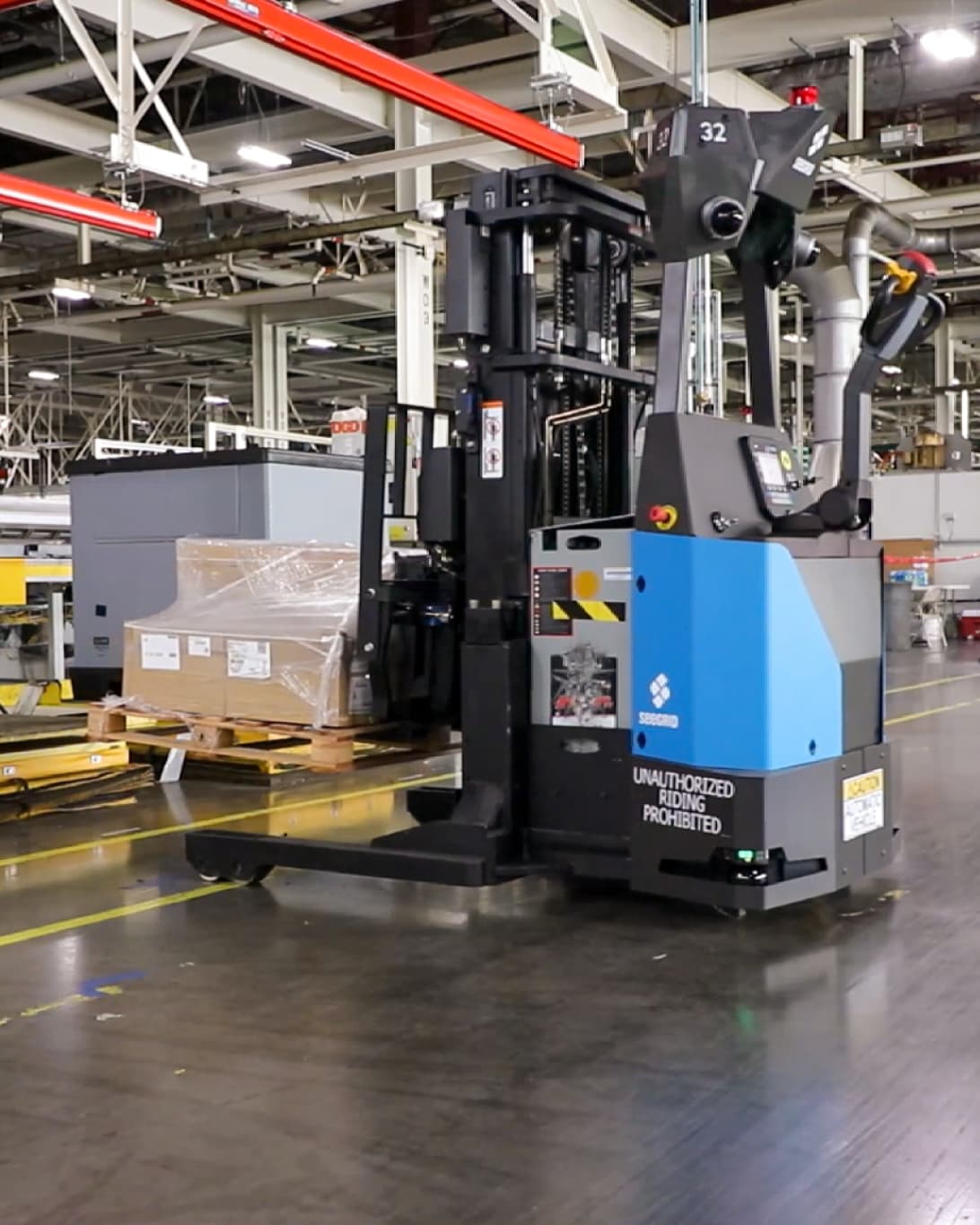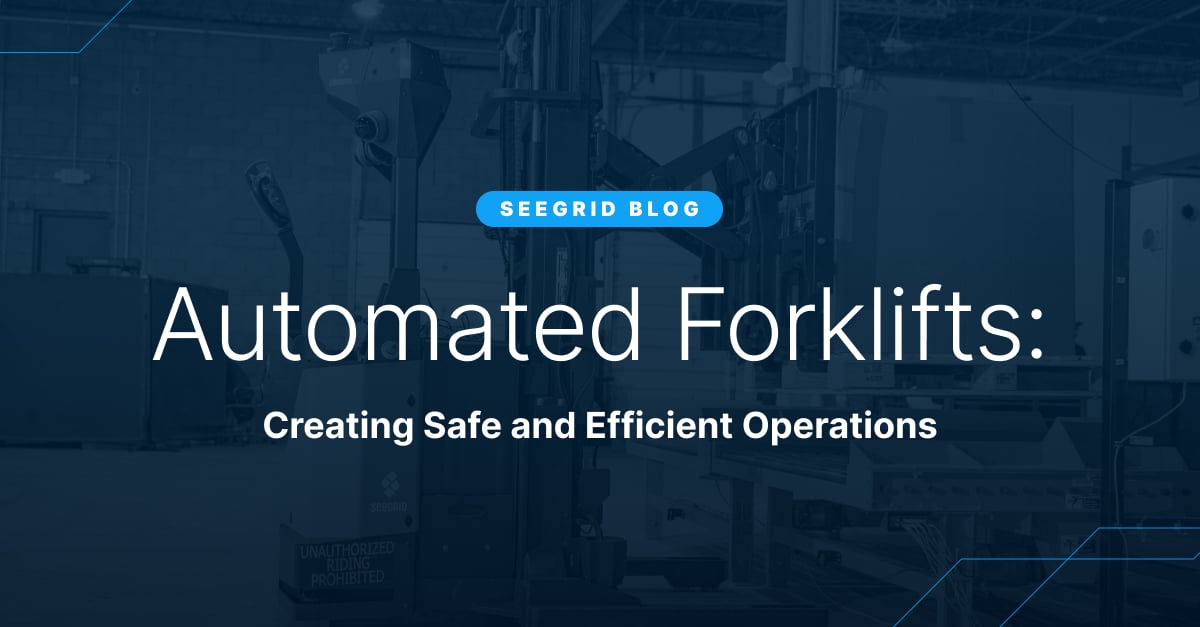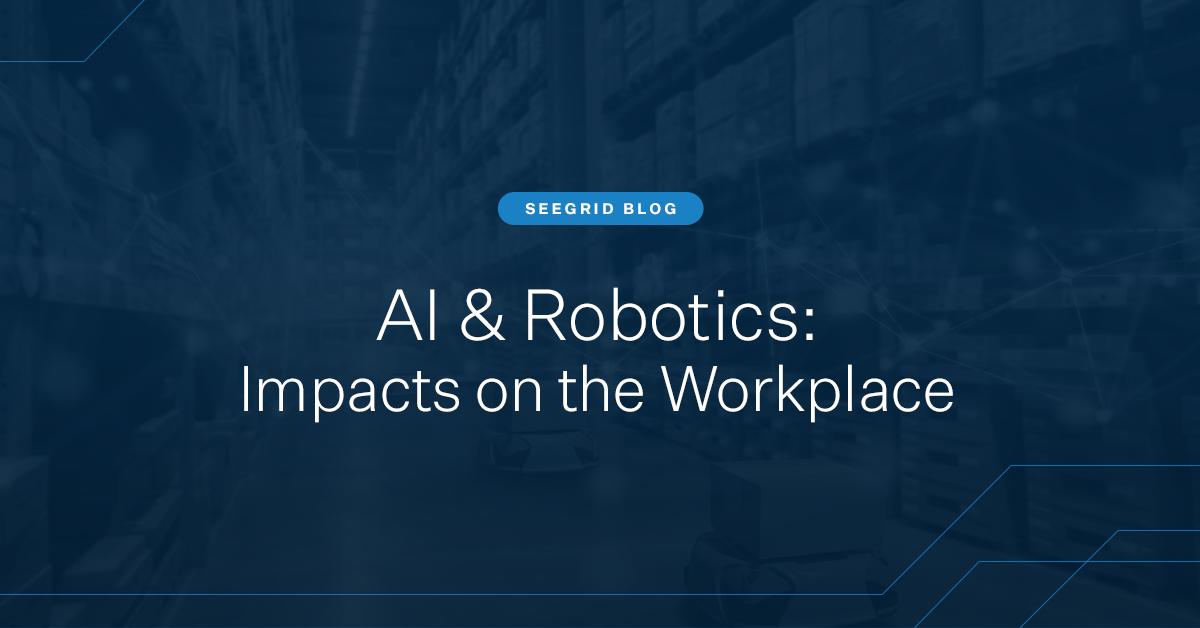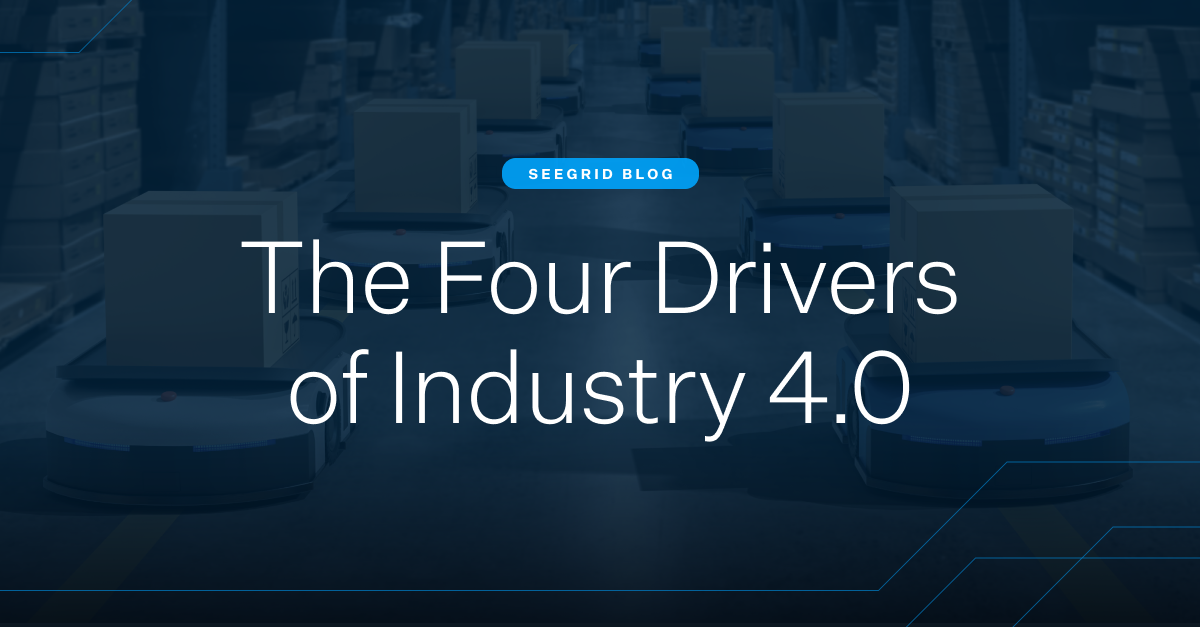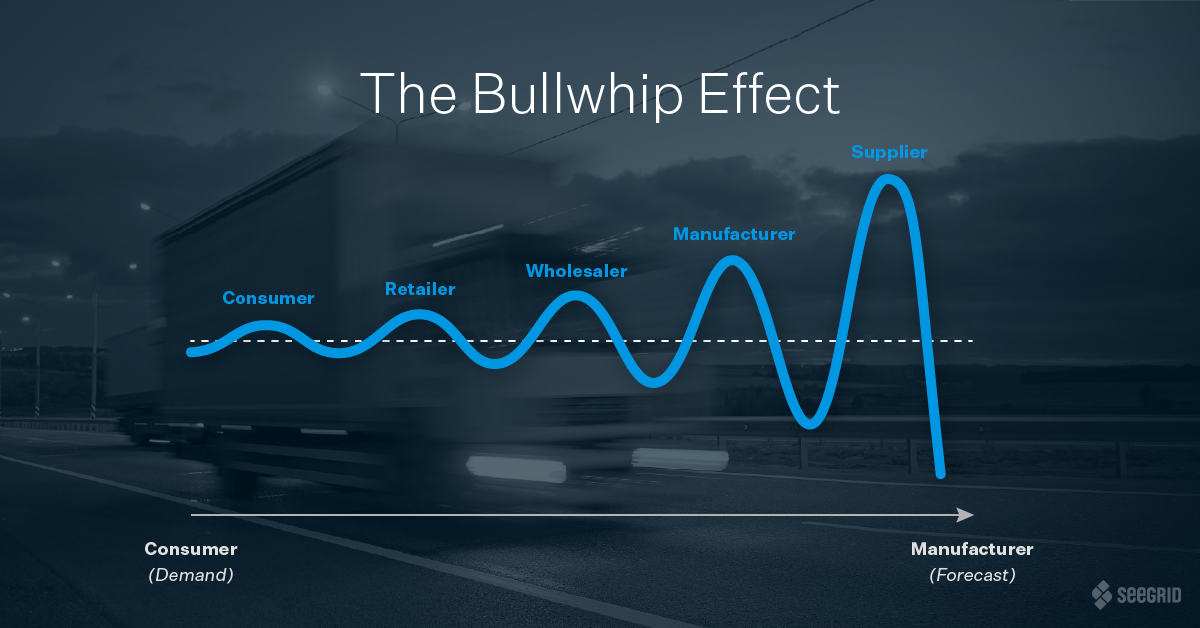In this blog, we discuss manually driven forklifts, otherwise known as powered industrial trucks, and the dangers they pose. Despite workplace safety regulations, manual forklift accidents are a common cause of workplace fatalities. We also investigate the costs associated with manual forklift operator labor and the benefits resulting from implementing autonomous solutions. Our best-in-class AMRs (autonomous mobile robots) like Seegrid's autonomous Lift, help facilitate a lean and flexible material handling process.
According to Safety in Numbers, manual forklifts have a 1 in 10 chance of being involved in an accident annually. These accidents contribute to 1 out of every 6 workplace deaths. Facilities using manual vehicles can face significant setbacks, which can be easily avoided by adopting automated material handling solutions.
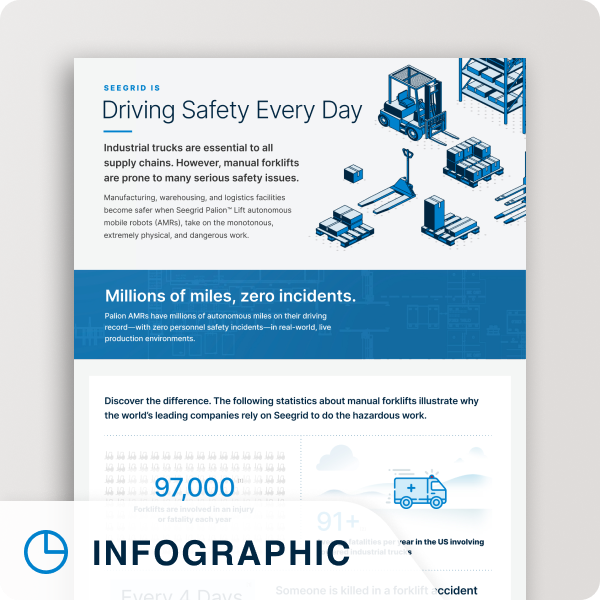 |
Infographic: Driving Safety Every DayDownload the infographic to discover how leading companies are improving safety and efficiency. |
Material handling automation has benefits that go beyond safety, particularly for manufacturing, logistics, e-commerce, and warehousing facilities. AMRs provide end-to-end, hands-free flexibility for facilities using manual forklifts for horizontal and vertical handling. Autonomous forklift trucks, pallet trucks, and tow tractors can collaborate to reduce risks and increase productivity.
Manual Forklift Incidents Bring Cause for Safety Initiatives
According to the United States Bureau of Labor Statistics, manual forklifts caused over 7,290 non-fatal injuries in 2021. These injuries resulted in 123,930 days away from work.
According to Optimum Safety Management and Safety in Numbers:
- Of the 855,900 forklifts in operation in the US, 11% will be involved in an accident
- 42% of forklift accidents occur from vehicle overturn
- 90% of forklifts will be involved in at least one injury or forklift fatality during its service life
Factors contributing to manual forklift accidents include distracted drivers, limited visibility, rough terrain, improper handling, and human error. Despite forklift safety training protocols, manually driven industrial vehicles still pose dangers. As a result, automation in material handling is gaining momentum to create safer processes in manufacturing, warehousing, and logistics facilities.
AMRs Drive Benefits
AMRs offer numerous benefits driven by corporate safety and lean manufacturing initiatives. Despite safety procedures and policies, accidents involving manually driven forklifts still occur. These accidents highlight the need for safer and more effective material handling systems. Adopting AMRs as a more efficient form of transport and material handling not only enhances safety but also improves margins.
To ensure worker safety, agencies like OSHA provide analysis, research, and prevention information used to regulate workplace safety. Evidence suggests that preventive measures don't guarantee best practices and safe behaviors among forklift operators worldwide. In dynamic and fast-paced facilities, human operators can easily become distracted, fatigued, or lack full visibility while operating a forklift. Companies concerned about forklift safety are proactively seeking alternative solutions with AMRs, automated guided vehicles (AGVs), and forklift-free environments.
Complex Environments Require Safe and Reliable AMR Solutions
Reliability and safety are essential for material handling. With many automation solutions available today, it’s crucial to select a vendor who emphasizes safety and proven solutions.
Automated technologies, like Seegrid AMRs provide a simple, flexible, and cost-effective solution. Seegrid AMRs are easily integrated into existing processes to keep production running smoothly and aisles free, producing a more profitable business. These solutions navigate and operate based on intelligent technology systems that enable safe, precise, accurate, and reliable material movement.
Autonomous Forklift Trucks Boost Lean Efficiency
Coupling automated material handling systems with lean principles is a step in the right direction for a more efficient operation. Driving improvement to support lean operation systems means enforcing a manual forklift-free environment and implementing a properly designed AMR system. This model eliminates waste and inefficient processes, ensuring quality products are available on time by removing non-value-added activities.
Automated material handling systems reduce manual forklift traffic and create immediate process improvement. For long-haul transport, tow tractor AMRs can efficiently and effectively move product, keeping inventory levels low and aisles free.
Autonomous lift trucks can close the loop by also integrating vertical pickup and placement for a true end-to-end solution. This process eliminates waste and improves material flow, streamlining the production workflow to create a safe, productive, and lean process.
Automation Solutions Drive Cost Efficiency
Beyond safety and lean manufacturing, autonomous material handling systems drive down costs related to labor, medical expenses, and training. They also reduce expenses associated with facility, equipment, and product damage caused by manually driven forklifts.
Traditional forklift operators represent an added labor cost that can be strategically allocated toward value-added positions. Increasing labor costs, limited workforce availability, and shifting demographics pose challenges for companies in maintaining sufficient trained forklift operators. High turnover rates also contribute to costly training requirements, worsening labor shortages amidst rising demand for skilled workers.
Manual forklifts, prone to accidents from human error, pose challenges for safely operating in tight spaces. This can result in injuries to employees and damage to equipment and products.
Instead of exposing workers to the hazards of manual forklifts, manufacturers, logistics facilities, and distribution centers should provide training for employees. This will help to transition them into higher value-added positions. These roles allow employees to enhance their skills and assume more fulfilling responsibilities while making use of collaborative mobile robots.
According to a recent survey, 77% of frontline supply chain workers were considering leaving their roles within the next three months. Additionally, 72% of respondents ranked career growth opportunities as a top priority when selecting a new role.
The consequences of workplace injuries go beyond the individual employer’s cost. Forklift accidents are just the tip of the iceberg when it comes to overall economic impact. The National Safety Council estimated the following economic losses from work-related injuries in 2021:
- $167 billion total loss
- $1,080 per worker
- $1,340,000 per death
- $42,000 per medically consulted injury
The National Safety Council also reported a loss in productivity in 2021 as a result of workplace injuries:
- 103,000,000 days lost
- 70,000,000 days lost due to injuries occurring in 2021 alone
- 33,000,000 days lost due to injuries in prior years
- 55,000,000 days lost in future years as a result of workplace injuries that occurred in 2021
Such productivity losses paired with expensive medical and wage payments greatly affect process efficiency.
Manual forklifts frequently cause issues in transporting palletized goods, resulting in inadequate material handling. This leads to damage of products and pallets, unsaleable merchandise, delayed order fulfillment, and significant financial losses for companies. These damages not only impact revenue but also harm their reputation, create negative customer experiences, and waste valuable productivity
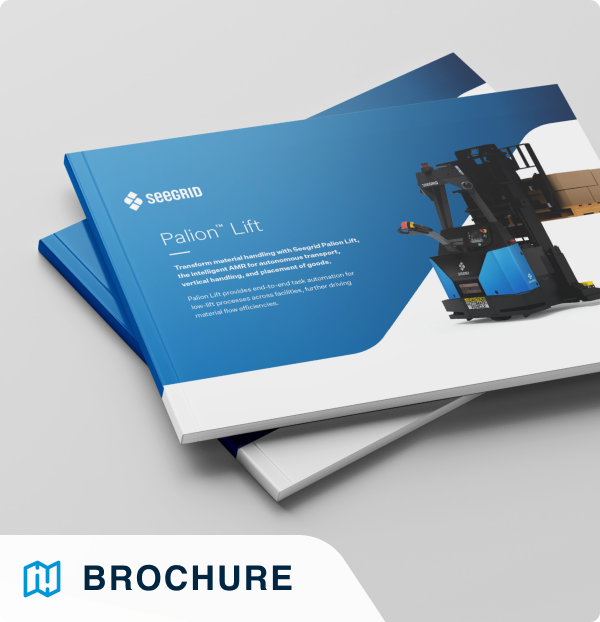 |
Brochure: Seegrid Lift AMRDownload the brochure to learn how to transform your material handling with end-to-end hands-free flexibility and safety. |
Safety and Profit are Not Mutually Exclusive
Now, more than ever, is the time to adopt AMR systems. With costs from accidents increasing and a workforce ready for value added tasks, it's time to transform operations with AMRs. Suited for safety and profit, automated forklift AMRs are driving the future of lean processes that out-perform manual forklifts.
